Hey there !
Wish we were writing this post on a happier subject… But for the past couple months we’ve been battling a spidermite invasion, and what a battle it’s been !
The infestation started in our little garden, on our tomatoes to be specific, but with time these suckers spread… Outside they got to our a bunch of our plants and while we were busy raising money for citizen lobbying tool these suckers got to our flowering tent…
Let’s go over this whole o’deal together 😉
Excuse us for not having the best quality pics available on this post, our camera broke and we haven’t been able to replace it yet
The first signs of Spider Mites…
As you’re most likely aware, spidermites reveal their presence by leaving little white spots on the leaves. If you’re seeing this, ACT NOW, the earlier you start fighting back the infestation the better your chances are.
On our end when we noticed we had just gotten back from vacation so the infestation was already massive.
The image below shows a couple leaves totally infested. The plant was over 4 feet tall, just imagine how many individuals were on there..

Every red dot… is an adult spidermite
Our first strike – Black Soap & Neem oil Combo
Since we already had dealt with a thrips invasion during our previous grow (yeah, we’re not lucky), we already had black soap and neem oil around.
These 2 ingredients work just as well as on Spidermites as they do on thrips, on paper. As we cover in our guide on how to deal with spidermites, the importance here is coverage, coverage, coverage.

Our neem oil & Black soap mix ready we started spraying all the infested plants, making sure to cover as much the top of the leaves and their backside, where the mites lay all their eggs.
The spidermites strike back, viciously
After applying the mix all over the plants, twice, leaving a couple day intervals we had to leave for a couple days again.
When we came back these suckers had come back too, and with a vengeance! Honestly I think there were thousands of them on just this one tomatoes plant.
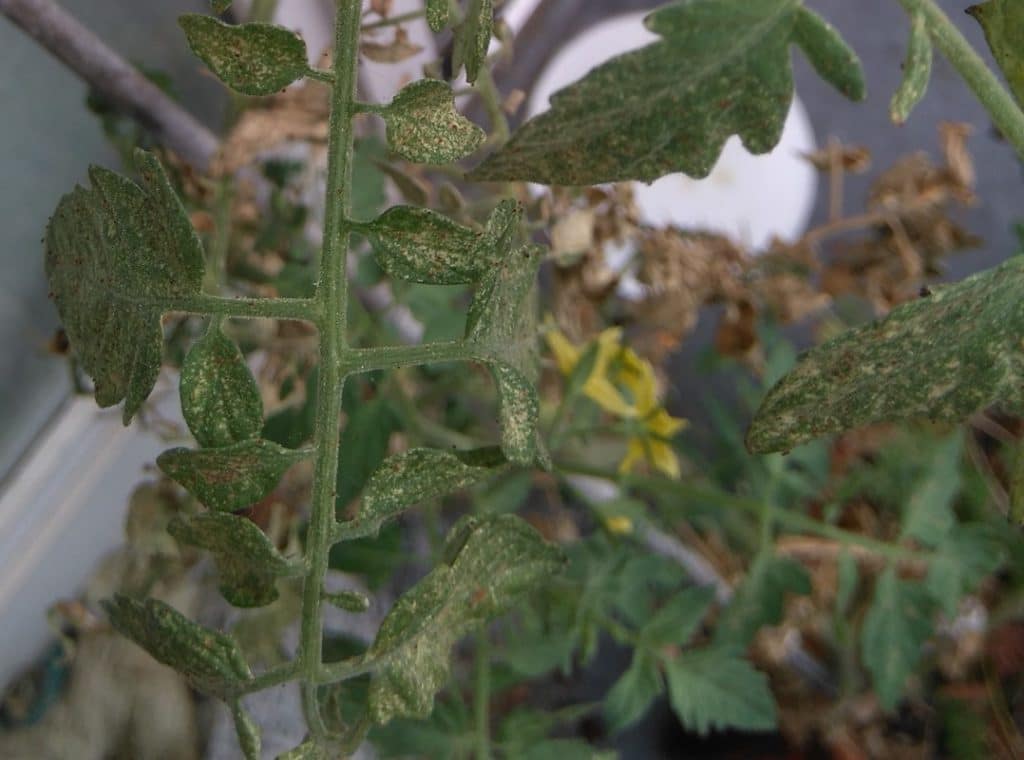
click on the image to get the full view, and again every red dot is an adult spidermite…
At this point it started really impacting the development of the plant with some sections totally dying out (the ongoing drought didn’t help out).
The fruit bearing sections went from 12 flowers to 2/3 per ramification, new growth slowed crazily and older sections started dying out.
Clearly, these pest don’t hesitate to suck the live out their host, literally.
Nature does things well… Investing in Predators
The Neem oil and Black soap mix is effective against the adult mites but I’m not so sure about their eggs, and since they can lay up to 20 of them a day, the adults are really just the visible part of the iceberg.
That’s where investing in a predator is useful, in our case we’re talking about the Phytoseiulus Persimilis, which feeds exclusively on spidermites and their eggs !
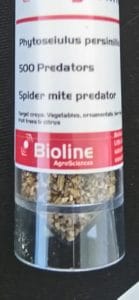
The number of individuals you want to get will depend on the size of your infestation, on our end with 500 we clearly under did it since we had about 6 infested plants by the time they got here.
As we point our in-depth article on spidermites, linked above, applying a round of neem oil & black soap mix a day before introducing the predators.
In doing so you will reduce the number of pests drastically, and then the predators will swoop in to finish the rest of the adults and eggs that are still around.
Not enough predators, the mites spread to the Cannabis plants
By now it’s been over 2 months since the first signs of the pest and they started infesting the flowering plant mid-way through the flowering phase.
The worst part, we were in the middle of the crowdfunding campaign with United4Earth so let’s just say that we weren’t the most attentive to our babies at that moment…
The mites had fully infested our Blue Kush by the time we even realized they were around.
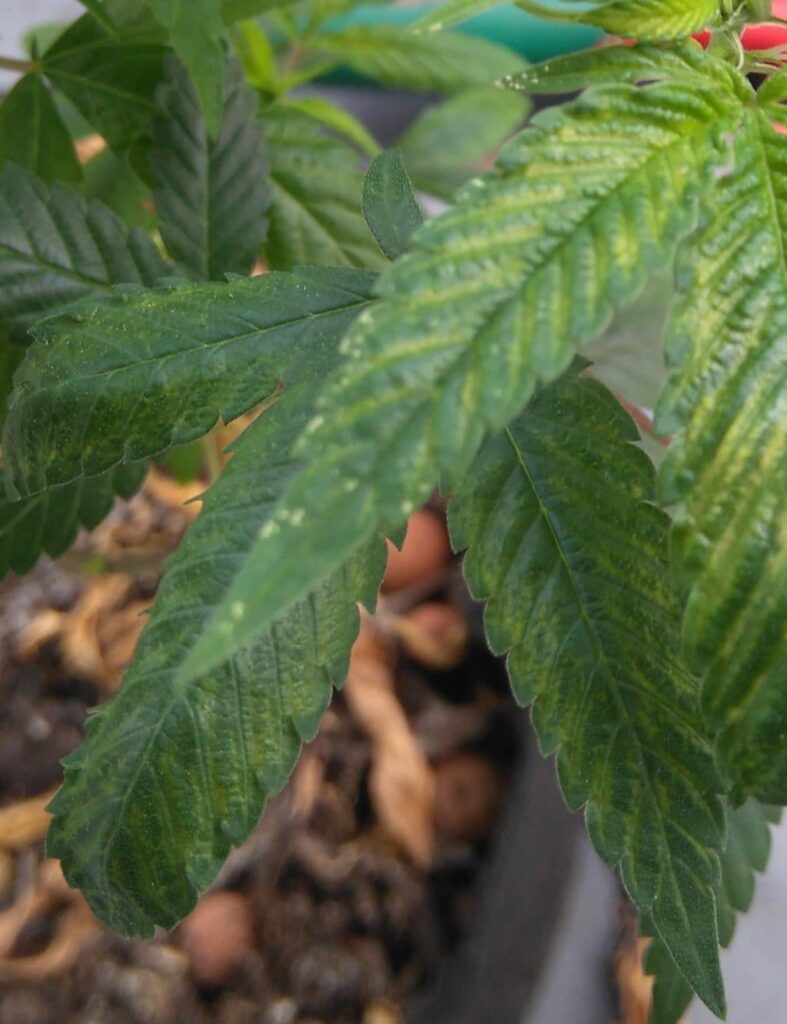
First white marks appearing on cannabis leaves
As you can imagine, we were unhappy of this discovery, to say the least. Here we were, back preparing a mix and ordering some predators, again…
Since we were in the flowering phase we just used the Neem oil the first time, as ingesting it can get you sick, so we didn’t want it all over the buds we were going to smoke.
A very weak harvest..
Every couple days we kept spraying the foliage, but there was so much damage done that we decided to go ahead and harvest, clean the room before placing the rooted clones into the flowering tent.
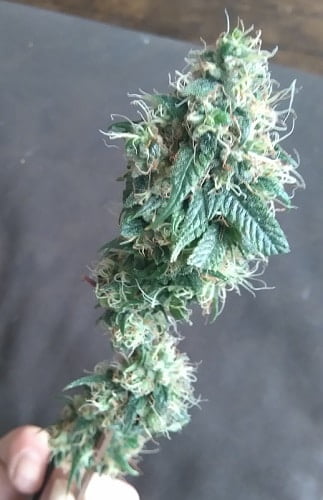
Critical + Apex bud freshly harvested and pruned
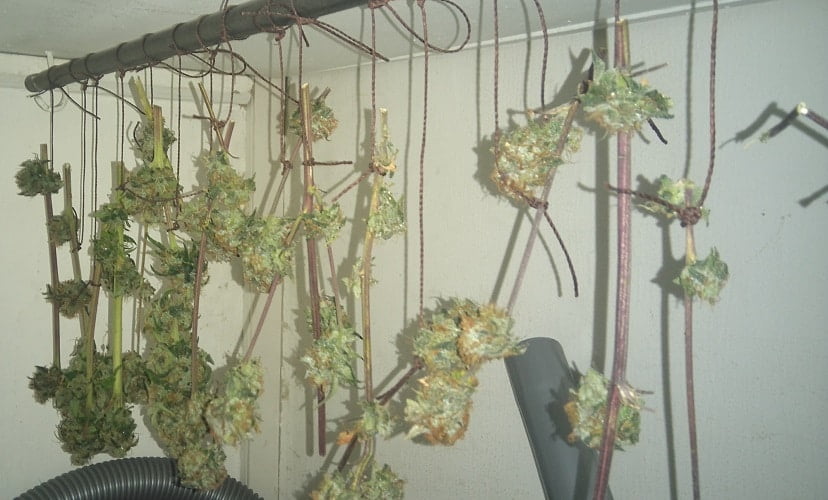
2 plants drying – Super small harvest
Just as we saw with the tomatoes, since the plants were battling for survival, the amount of flowers produced was severely impacted. We haven’t weighed it out yet but i’m thinking it lost us at least 50% of the harvest..
Hopefully our in-depth clean of the grow room got rid of the last suckers, but just in case we still have that batch of predators that should be arriving soon. We will introduce them in the grow room regardless so that they can go hunt for eggs.
We don’t wand to get a surprise in a couple months when the ones laying around start hatching.
That’s it for this one ! Hopefully this will be our last post regarding spidermites (and thrips)
We’ve decided to start posting an article every friday from now on, so until next week,
Be safe and grow easy!
